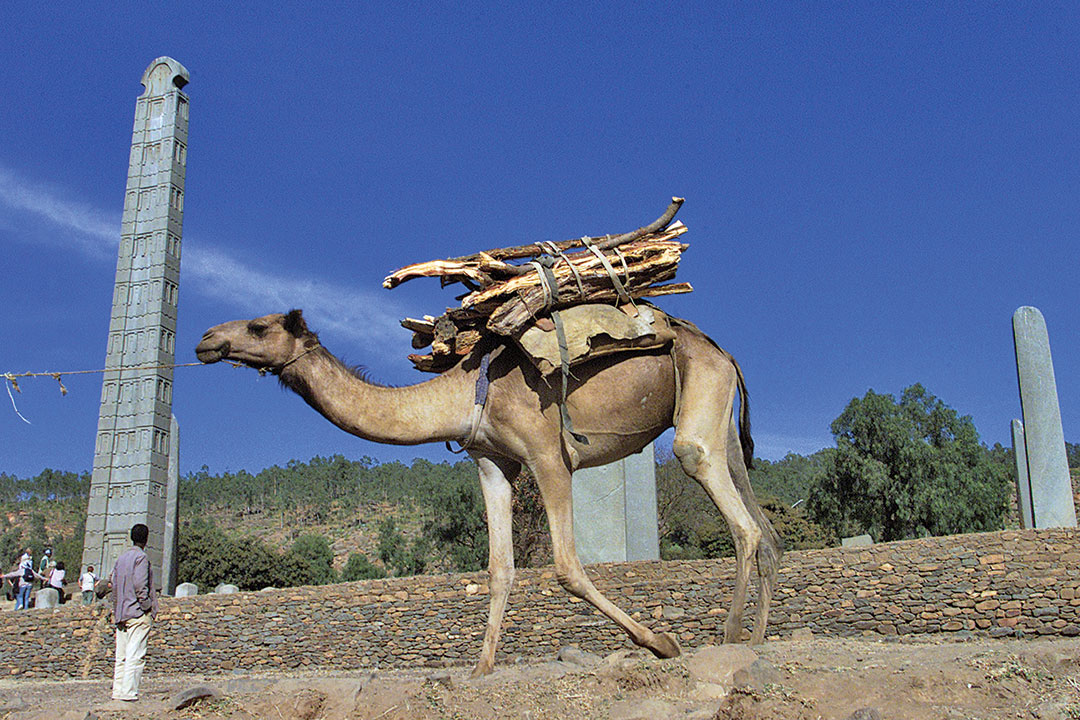The Kingdom of Axum
ADF STAFF
The Kingdom of Axum, also known as Aksum, was the first to do many things in Sub-Saharan Africa. It was the first kingdom to mint its own coins. It created its own written language, called Ge’ez, which still is in use in Ethiopia today. Its king was the first to adopt Christianity as an official religion. And Axum dominated trade in the Horn of Africa and across the Red Sea for centuries.
Although the kingdom dated to the first century A.D., its time of greatest influence and prosperity was from the third century to the sixth century. The kingdom lasted until the eighth century. It occupied the region that is now Djibouti, Eritrea, Ethiopia, Somalia and Somaliland.
It may have been inevitable that the Kingdom of Axum would prosper. The region was blessed with rich farmlands, disease-free grazing areas and dependable rainy seasons. Its location on the Horn of Africa made it ideal as a regional trade center. Axum traded mainly in gold and ivory, but also in rhino horn, salt, precious stones — and slaves. Arab merchants traded textiles, swords, wine and olive oil.
With the wealth accumulated through trade, the kingdom built a strong army, with one king replacing a network of regional chiefs. The subjugated tribes retained some independence but had to pay taxes, usually in the form of hundreds of cattle.
The king of Axum took the title of “Negusa Negast,” or “King of Kings,” which some historians believe indicated that he allowed his tribal leaders to regard themselves as “junior kings” and to continue to rule their people.
One region of Axum used a written language called Sabaean, a Semitic language from the Middle East. Other parts of the kingdom used Greek. Axum developed its own written language, with the earliest examples found on rock slabs around the second century. Ge’ez has characters for vowels and consonants and is read from left to right, like Western languages.
Axum became the first Sub-Saharan kingdom with its own mint, a result of exposure to so many advanced cultures as a trade center. The first coins, in gold and silver, were produced in the third century and had Greek inscriptions with Sabaean symbols. They were minted in accordance with standard Roman coin weights, to make them valid for foreign trade. The kingdom produced thousands of coins, most of them in bronze.
What historians know about the kingdom is based on sparse written records that include conflicting stories. But one method of tracking the empire’s history is through its coins, which featured portraits of the reigning kings — 20 in all — over more than three centuries. Accompanying the portraits are usually two ears of corn, and since the reign of Ezana I, a Christian cross. The coins have the name of the king and an encouraging slogan, such as “Peace to the People.”
By having its own coins, comparable to those of older, more established empires, Axum had declared that it was the equal of all existing civilizations. In its time, it was described as one of the four great empires in the world.
The kingdom began its decline in the late sixth century for several reasons. The kings’ policy of allowing their chiefs to control their tribes proved to be a mistake, as the chiefs began to rebel. The bountiful land went into decline from overplanting, and the Rashidun Caliphate — Arab Muslims — proved to be formidable trade competitors in the Red Sea and the Gulf of Aden.
What remained of Axum rose again in the 13th century, as the Kingdom of Abyssinia.


Comments are closed.